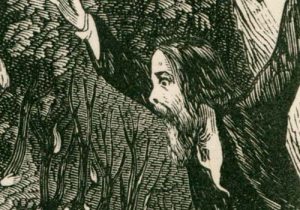In an autobiography written in 1855, Methodist minister William Winans claimed to have witnessed the jerking exercise in southwestern Pennsylvania as early as 1802. His use of the term “Jerks” is anachronistic, however, as it did not enter the lexicon of the Great Revival until the spring of 1804. Yet Fayette County was a hotbed of revival activity, especially among the members of the Redstone Presbytery, some of whom may have experienced convulsive fits within a year or two of the earliest camp meetings and sacramental festivals in Kentucky.
While we resided in Fayette County, I think in 1802, there was a very great Religious excitement among the Baptists and Presbyterians, in that part of Pennsylvania. These two sects held union Prayer-meetings once or twice every week, for a considerable time. These meetings assembled in the dwelling-homes most convenient for the purpose, of those who were favorable to the Revival. Multitudes attended these meetings—many from the distance five miles and even a greater distance. The Jerks was a prevailing exercise throughout the whole of this excitement. Neither the cause nor nature of this exercise was ever satisfactorily explained. It evidently was not affected by those who were its subjects. It could not have been affected. No histrionic aptitude could have imitated what was common to men, women and children, or all sorts of talent and temperament. There is reason to believe that it was not the influence of infernal agency: for, many of the most deeply pious, freely yielded themselves up to it, without detriment to their piety. Neither, I think, could it be attributed to religious influence; for many of its subjects were openly wicked when it befel them; and, neither while they were under its influence nor afterwards, did it appear to be, in their case, at all connected with any tendency to penitence, reformation or piety. At the time, various opinions in regard to it were entertained. Some thought it was a work of the Devil, designed to bring a reproach upon religion—others considered it the result of sympathy—a spasmodic affection of the muscles, excited, through the nervous system, by the imagination of the subject so affected. Much the greater portion of the Religious community, however, accredited it confidently to Religious influence. I remember to have heard a Presbyterian Minister of some note, preach two Sermons, to establish the religious character and tendency of this exercise from the Text, Acts XIII. 41. “Behold ye dispisers! and wonder and perish: for, I work a work in your days, which ye in nowise believe, though a man declare it unto you.” In this favorable view of the matter, I heartily concurred at the time,—sincerely believing the Jerks to be an indication of a Pentacostal season “of refreshing from the presence of the Lord.” But, when I came to test the claims of this mysterious affection by the Gospel touchstone—“By their fruits shall ye know them,” I was compelled to abandon this opinion, and admit that it was among those things for which I could assign no cause. I could not perceive that after an extensive and long continued prevalence, it had accomplished any change in the moral condition of those upon whom it had operated.
